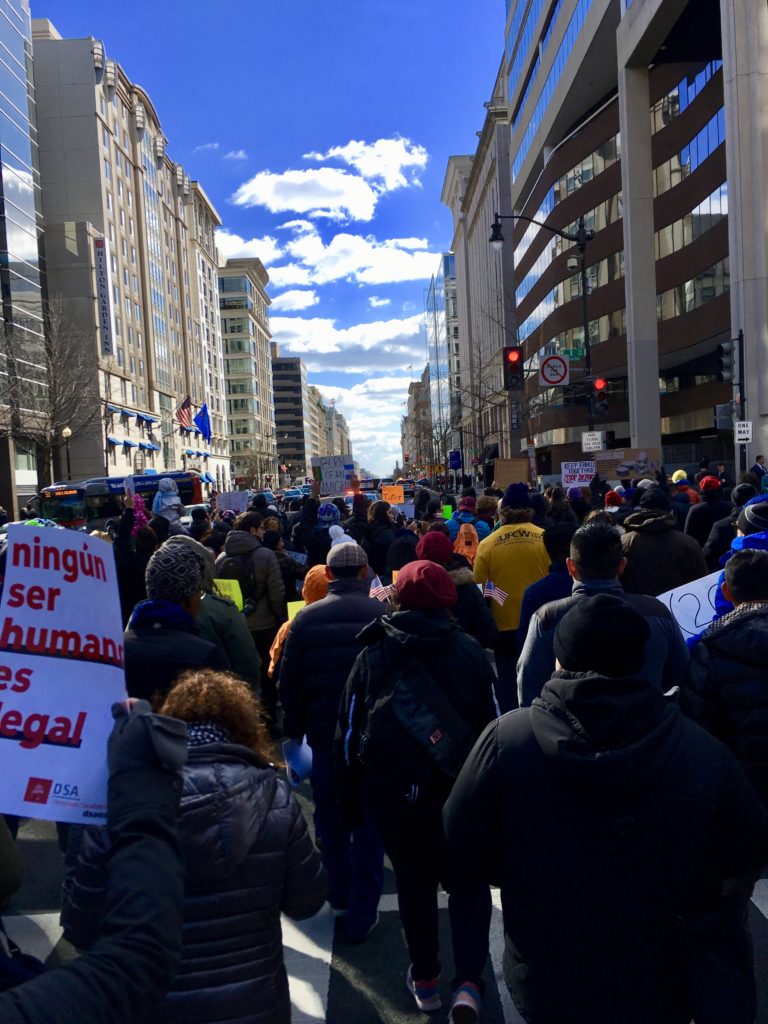
Tell me what democracy looks like. This is what democracy looks like!
Today, in Washington and across the United States and beyond, people honored A Day Without Immigrants in various ways, some publicly and loudly, some quietly and privately. In Washington, a boisterous crowd marched and chanted for much of the afternoon, going from La Casa, a community center in the heart of the historic Salvadoran and Latinx community; to 14th and U Streets, a historic intersection of Black Liberation and Power histories and struggles; to a local Whole Foods, to engage with workers’ struggles; to the Wilson Building, which houses Washington, DC, municipal offices; to the White House. The journey from La Casa to the White House is incredibly short and impossibly long. In a few brief hours, that multigenerational, multinational moving body of moving bodies passed through and united entire centuries as well neighborhoods, continents, and populations.
While a great deal of attention has been paid on the `hospitality industry’, and particularly restaurants, in Washington, the largest private employers are universities. In many cities, universities are the largest or among the largest private and public employers. While many of on the march work in hotels, households, transportation and restaurants, there were also engineers, writers, lawyers, doctors and teachers. We came from El Salvador, Guatemala, Honduras, Paraguay, Mali, Ethiopia, Eritrea, Nigeria, India, Pakistan, Portugal, Belgium, and the United States, to name only a few. Between chants, we shared stories of our various migrations and we shared stories of our “regular”, everyday lives.
In Washington, as elsewhere, a Day Without Immigrants would close every university and college, every hospital and clinic, as well as restaurants, hotels, gas stations, grocery stores, all forms of transportation, and much more. I hope that our universities, colleges, and hospitals are as direct and courageous as many restaurant owners have been in their opposition to the criminalization and dehumanization of immigrants.
Many restaurant owners have made it clear that the dignity and safety of immigrants cannot be merely an economic argument. That our economic lives rely on immigrants is not and cannot be the point. The point is that, despite ever growing inequality, we live together, and that, living together, is what community looks like and what democracy looks like. When we join our voices, whether in the streets or in the classrooms or elsewhere, we create and we become one beautiful voice. Many languages, one beautiful voice. This is what democracy looks like.